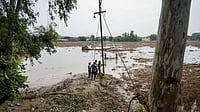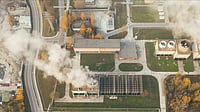Severe winters have struck most regions in Northern India but down south, Kerala has been experiencing heatwave-like conditions.
The southern state recorded its maximum temperature for the month on December 31 as Kannur reached 37.2 degrees Celcius. For six consecutive days from December 14 to 19, Kannur experienced the highest temperatures. Kannur was one district in the state which recorded highest temperatures during the first week of January.
Since the starting of 2025, some of the districts including Kozhikode, Thiruvananthapuram, Punalur recorded higher temperatures. While southern districts Ernakulam, Pathanamthitta and Kottayam saw increased temperatures, Northern Kerala was the most hit by intense heat.
After India Metereological Department (IMD) issued temperature alerts in the state last week, the Kerala State Disaster Management Authority (KSDMA) issued a heat warning. The KSDMA has also cautioned people to avoid sun exposure between 11AM and 3PM.
According to MG Manoj, a scientist with the Radar Research Centre of Cochin University of Science and Research, as cited in a Down To Earth report, the above normal temperatures are caused by the convection band—a band of thunderstorms or rain that forms due to the movement of heat and moisture in the atmosphere—between Sri Lanka and the equator. The situation is expected to remain like this over the next week.
IMD Kerala director Neetha K Gopal told The New Indian Express that Kerala is expected to have above normal temperatures for the month of January and February. She said, “The state was supposed to experience a cool period. Normally, we get northerly wind during this time, but now we are getting strong easterly winds. So, the temperature is not dipping.”
Rainfall is expected at a few places in the state in the coming days, IMD forecasts suggested. The minimum temperatures were appreciably above normal on January 19 by 1–3°C in the state while the maximum temperatures were 1.6–3.0°C below normal at a few places.
The impact of climate change are significantly visible in the state. Last year, it experienced a number of extreme weather events. The monsoons were less rainy than normal, with skewed distribution and marked by short and intense storms. By the end of the year, the average rainfall was 1% below normal levels over the three months. The southwest monsoon which contributes nearly 80% of Kerala’s total rainfall was 13% deficient last year.
According to IMD data, the state experienced four extreme rainfall events, with localised intense rainfall exceeding 204 mm within 24 hours, as reported by DTE.
Additionally, the IMD confirmed a cloudburst, a small-scale weather phenomenon in space and time, at Thrikkakara in Kochi on May 28. Landslides in Wayanad in July claimed over 200 lives, and the state recorded six heatwave days in April for the first time.






























